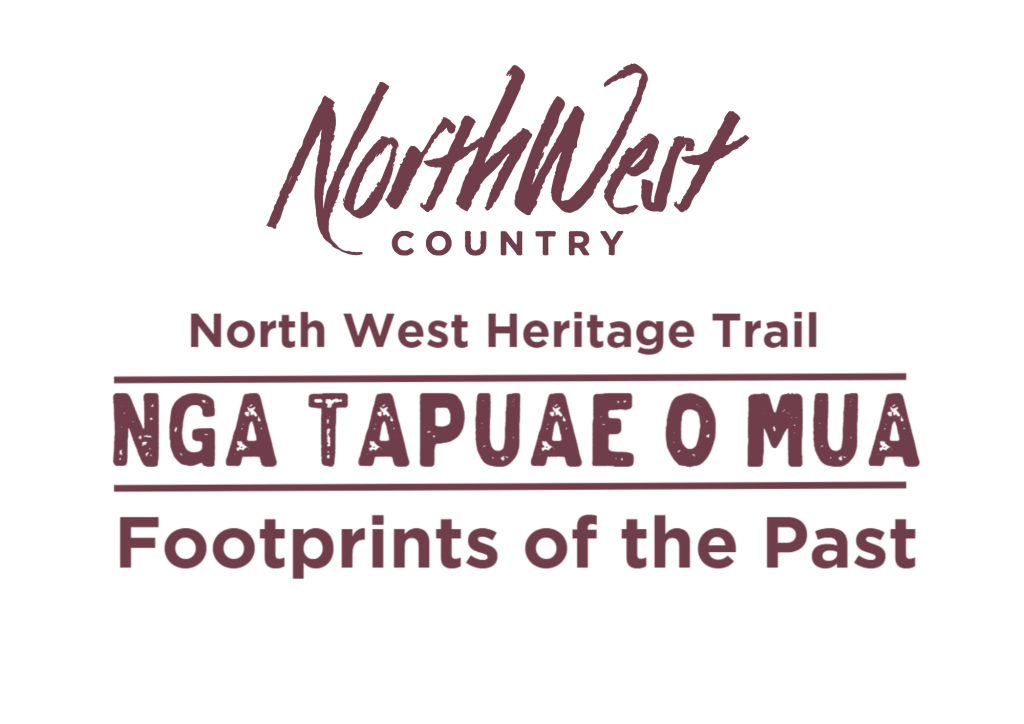
KO NGĀ PAKANGA ME NGĀ URUPĀ
He maha ngā riringa a te iwi Māori, ēngari , ko te nuinga he pakanga iti i mua i te taenga mai o ngā pū. Pērā i te ao katoa, i whawahi rātou mō te whenua, mō te utu hoki. I te pahemo, he maha ngā tikanga rerekē. I kawea te tupāpaku ki tētahi wāhi tapu, ki tētahi wāhi huna. Tāria te wā, i pahore te kikokiko i ngā kōiwi, ā, i hunaia ngā koiwi anō. Ināianei, ka nehua ai.
WARS & CEMETERIES
Māori had many battles but, before Europeans arrived with muskets, most of them were comparatively small. Just like the rest of the world they were generally over land or revenge for a wrong doing. Māori death customs were quite different from what they are now. The dead were arranged in a secret place from whence they were retrieved later so that the bones could be scraped clean and then placed in their forever resting place. This custom has now been replaced with the European custom of burial.
NGĀ PAKANGĀ ME NGĀ URUPĀ WARS AND CEMETERIES
HELENSVILLE DISTRICT WOMEN’S AUXILIARY
The day after war was declared with Germany in 1939, the local women resolved to form the Helensville District Women’s Auxiliary. The committee was headed by Mrs Lil Lambert. Mrs A E Kemble was the secretary. Later a sub-committee was formed in Parakai with Mrs Mueller and Misses Mary Nicholls and Marjorie McLeod as officers.
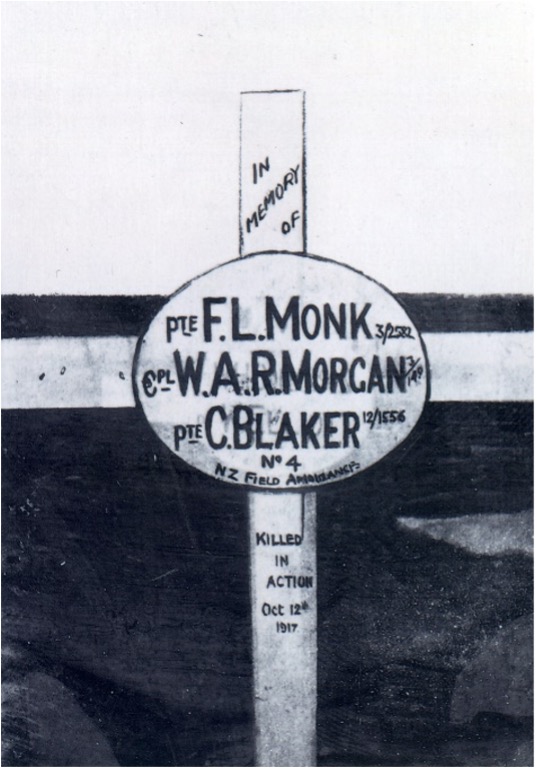
 The remains of these three men were placed beneath this cross, and subsequently destroyed by artillery fire. Their names are now listed on the wall of Tyne Cot Cemetery, near Passchendaele. The NZ Memorial is nearby – courtesy of Helensville Museum
The remains of these three men were placed beneath this cross, and subsequently destroyed by artillery fire. Their names are now listed on the wall of Tyne Cot Cemetery, near Passchendaele. The NZ Memorial is nearby – courtesy of Helensville Museum
The members of the Women’s Auxiliary immediately began setting up emergency stations, learning First Aid, and providing servicemen, who were on their final leave in Te Awaroa (Helensville), with farewell socials and parcels of comforts. Further parcels followed these men overseas. In 1940, their work was extended to include service to the Lady Galway Patriotic Guild. The figures in the final report of the Helensville District’s Women’s Auxiliary gave an indication of what had been accomplished. 3,292 parcels of food had been posted overseas, and over 5,000 garments had been knitted.
A meeting was called on 26 March 1945 of those interested in setting up a Women’s Section of the Kaipara RSA. One of their major objectives was to help soldiers and their families readjust into the life of the community on their return from war. An article in the Kaipara and Waitematā Echo stated “With the advantage of women’s instinct and understanding and with minds accustomed to solving human problems and difficulties womenfolk are more capable and better fitted to deal with and assist in this personal aspect of their rehabilitation “.
The Women’s Section was actively involved in supporting families of local servicemen by visiting Malolo Hospital and soldiers’ homes. In 1946 they adopted a “T B Shack” (Rowe Ward) at Greenlane Hospital and for at least 15 years they continued regular, frequent visits to the returned servicemen there.
After years of both social and social-welfare activity, the Kaipara Women’s RSA went into recess in 1972. In 1984 the branch was reformed and has once again gone into recess.
NGĀ PAKANGA ME NGĀ URUPĀ
WARS AND CEMETERIES
Māori have lived in the southern Kaipara for approximately 700 years. Many visitors came by canoe, intermarried, and settled over the years. The area was very desirable, and some chiefs were hungry for more land, there were many invasions from north and south. Possession of the area changed many times, but Te Taoū are recognised tangata whenua (people who belong to this land) of Te Awaroa (Helensville).
In the late 1820s and early 1830s the majority of Te Taoū iwi (tribe) lived in exile in the Waikato because of intertribal wars. A small number remained in the Southern Kaipara to maintain occupation rights, this included Te Otene Kikokiko who, with a small group, never left the Kaipara area.
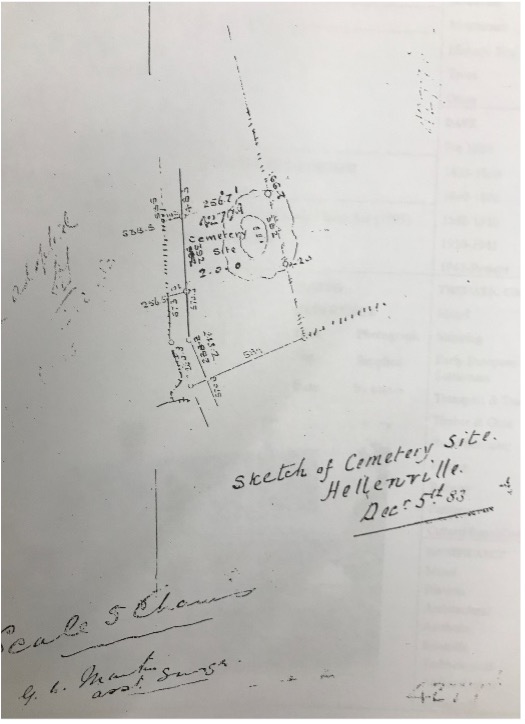
 1883 Sketch of Helensville Cemetery – from Helensville Heritage Study 1993
1883 Sketch of Helensville Cemetery – from Helensville Heritage Study 1993
With war came death and Māori had developed a complex set of burial practices by the time Europeans arrived. The use of secret burial locations protected the dead and urupā (burial grounds) were valued as tapu (sacred) sites. Early missionaries were keen to quash the concept of personal tapu that set the rules of many Māori funeral and burial customs. However, in most cases, Māori continued practising traditional funeral rituals, and treated burial places according to pre-contact concepts of tapu rather than European notions of sacredness.
Māori leaders of the Southern Kaipara wanted peace in their lands and believed Europeans could assist them in this. John and Isaac McLeod brought their families out from Nova Scotia and were looking for a place to settle. Te Otene Kikokiko, tohunga and chief of Te Taoū, was most pressing in his invitation to come and settle in Te Awaroa. This led to a peaceful coexistence between Māori and Pākehā in the area. It also led to peace when the land battles of the New Zealand wars were happening in other parts of Aotearoa (New Zealand).
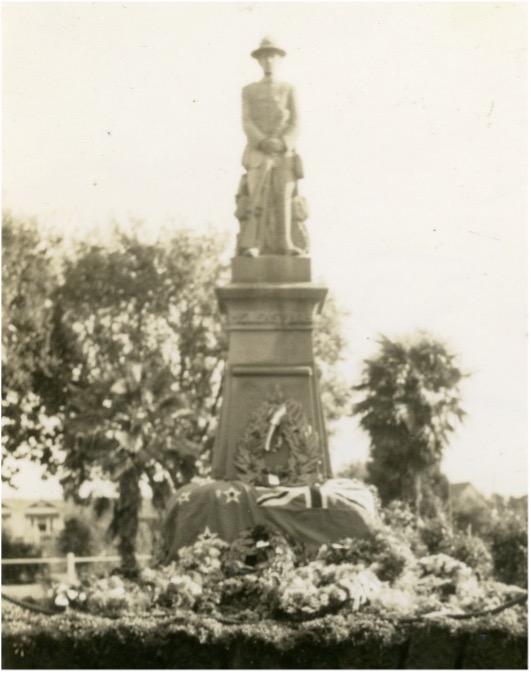
 Kaipatiki WWI memorial – courtesy of Helensville Museum
Kaipatiki WWI memorial – courtesy of Helensville Museum
The 1880’s saw the beginning of cases in the Native Land Court and in July of that year claims to several small blocks of Te Awaroa were heard. It was at this time that Paora Kawharu gave two acres of ground in Garfield Road for the Te Awaroa cemetery. In 1884 Paora Kawharu was paid a token sum for the cemetery by the Helensville Town Board to prevent the compensation claims of that time.
In 1914, when war was declared between Aotearoa (New Zealand) and Germany, residents shared the view of the British that “the war would be over by Christmas”. While local men enlisted, the home front swung into action and Patriotic League groups formed and campaigned for funds for the war effort. In 1916, the first Anzac Day services were held. Memorial services held in the churches, for men from Te Awaroa killed in the war, became distressingly frequent. In 1919, the Helensville branch of the Returned Services Association (later the Kaipara Memorial RSA) was formed and a memorial statue to those who lost their lives was carved by William Henry Felton and erected in Kaipatiki (Parakai) in 1922.
More Reading from Papers Past:
Returning Soldiers 5 October 1945
Protective Dog 5 April 1898 (see last paragraph)
People & Their Stories…
Wiremu Paora
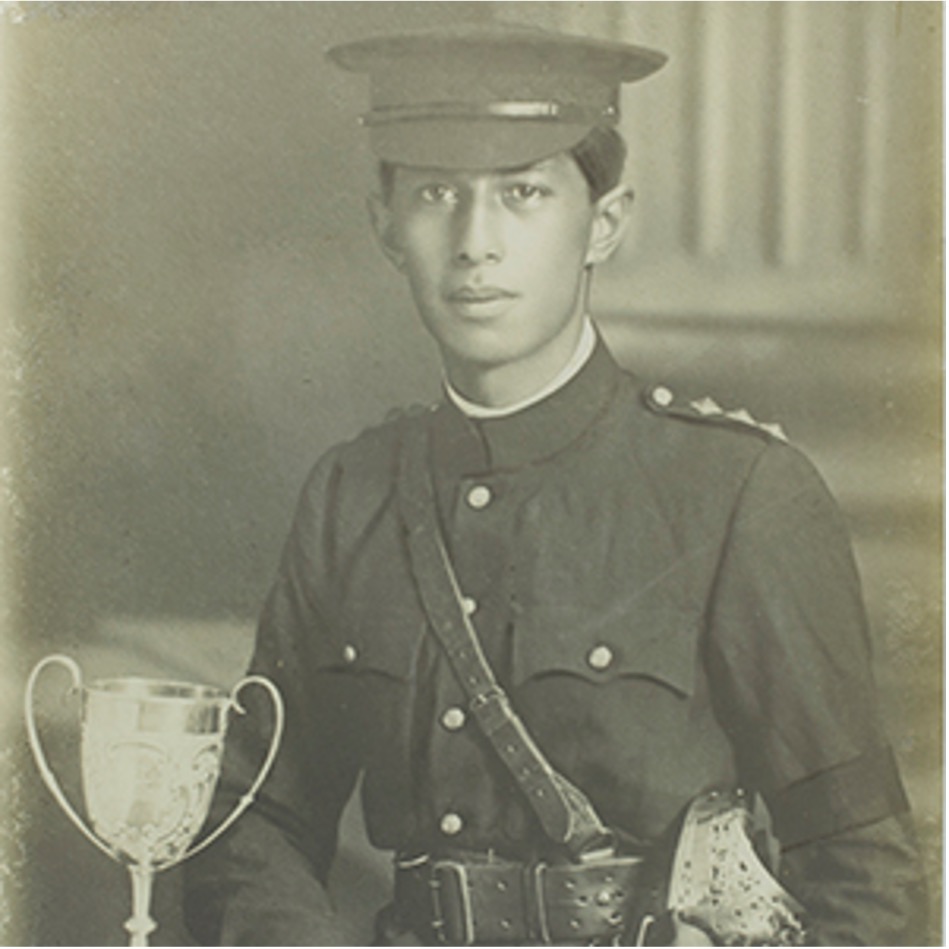
Wiremu Paora was born on 23 October 1892 at Rewiti, to father Rev Hauraki Paora and mother Hemaima Paora, otherwise known as Te Mihinga Te Kawharu (Cassidy). His parents were firm believers in education and after primary school at Woodhill, he went to Auckland Grammar from 1906 to 1910.
In 1913 Wiremu qualified as a surveyor and from 1913 to 1916 he worked for the Lands and Survey Department. A promising career was cut short by WW1, and Wiremu enlisted with the 4th Reinforcements Māori contingent, which was part of the NZ Expeditionary Force. The Native Contingent was replaced by the Pioneer Māori Battalion, which allowed Māori soldiers to stay together. They were tasked with dangerous, front-line manual labour jobs when they moved to the Western Front. The newly formed battalion were the first Aotearoa (New Zealand) unit to arrive at Somme, France. After the first day of attack on the Somme, Wiremu’s military record indicates he was believed dead. He was, in fact, admitted to a military hospital, having been severely injured by an exploding shell.
After his return to Aotearoa Wiremu studied engineering mathematics at Canterbury University College and rejoined the staff of the Lands and Survey Department. He married Janet Knox Anderson, an English physiotherapist, in 1926 and their only son, Ian Hugh, (Hugh) was born in Ashburton the following year.
Wiremu is remembered for his tireless efforts touring the area from Cape Reinga to Gisborne, checking the names of those of his comrades-in-arms who fell in the Great War to ensure their names would all be inscribed on the Shrine of Remembrance Roll of Honour at the Auckland War Memorial Museum. On 24 April 1932 the families of those whose names are on the engraved marble slabs in the Hall of Memories were invited to a private viewing before the public unveiling on ANZAC day the next day.
Wiremu died on 24 May 1955 and was survived by his wife Janet and son Hugh. He is buried in the urupā, cemetery at Rewiti as Wiremu Hauraki Paora Kawharu.
We thank the Auckland War Memorial Museum and Margaret Kawharu for the use of this story.
